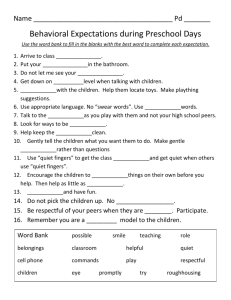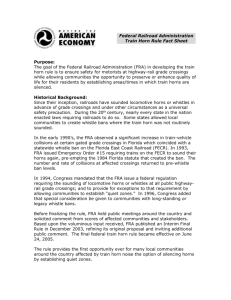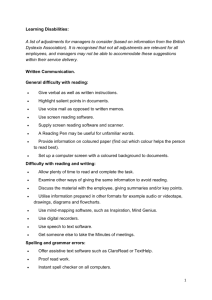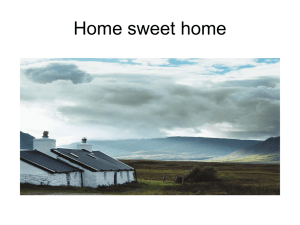Questions for the FRA on the Glendale OH Quiet Zone
advertisement
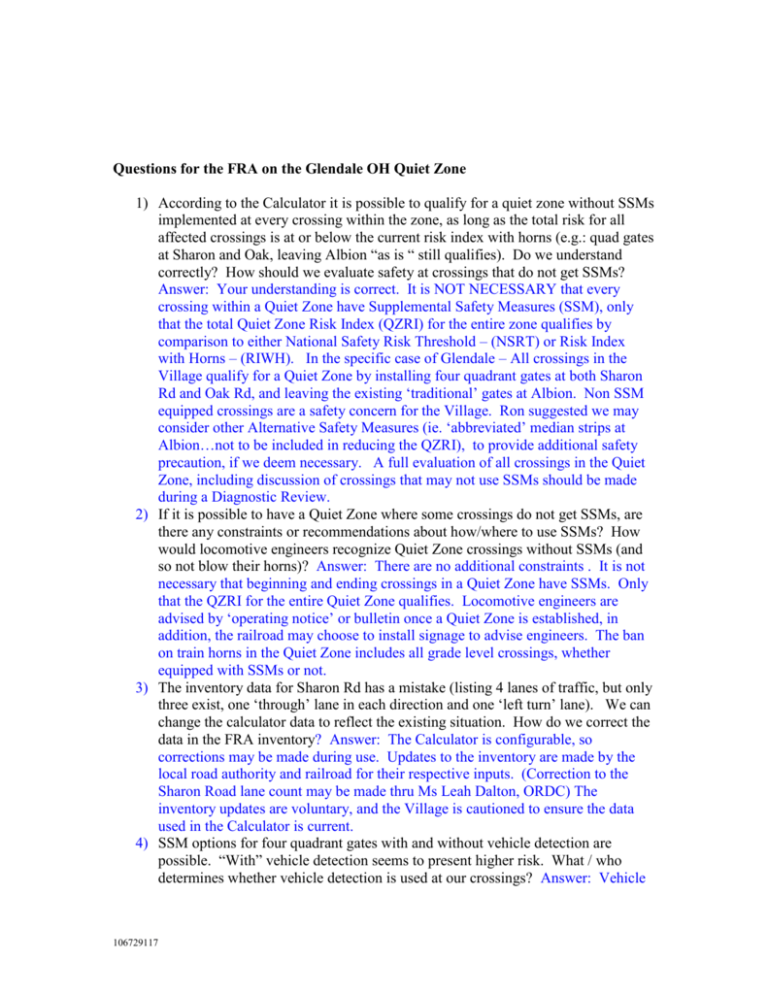
Questions for the FRA on the Glendale OH Quiet Zone 1) According to the Calculator it is possible to qualify for a quiet zone without SSMs implemented at every crossing within the zone, as long as the total risk for all affected crossings is at or below the current risk index with horns (e.g.: quad gates at Sharon and Oak, leaving Albion “as is “ still qualifies). Do we understand correctly? How should we evaluate safety at crossings that do not get SSMs? Answer: Your understanding is correct. It is NOT NECESSARY that every crossing within a Quiet Zone have Supplemental Safety Measures (SSM), only that the total Quiet Zone Risk Index (QZRI) for the entire zone qualifies by comparison to either National Safety Risk Threshold – (NSRT) or Risk Index with Horns – (RIWH). In the specific case of Glendale – All crossings in the Village qualify for a Quiet Zone by installing four quadrant gates at both Sharon Rd and Oak Rd, and leaving the existing ‘traditional’ gates at Albion. Non SSM equipped crossings are a safety concern for the Village. Ron suggested we may consider other Alternative Safety Measures (ie. ‘abbreviated’ median strips at Albion…not to be included in reducing the QZRI), to provide additional safety precaution, if we deem necessary. A full evaluation of all crossings in the Quiet Zone, including discussion of crossings that may not use SSMs should be made during a Diagnostic Review. 2) If it is possible to have a Quiet Zone where some crossings do not get SSMs, are there any constraints or recommendations about how/where to use SSMs? How would locomotive engineers recognize Quiet Zone crossings without SSMs (and so not blow their horns)? Answer: There are no additional constraints . It is not necessary that beginning and ending crossings in a Quiet Zone have SSMs. Only that the QZRI for the entire Quiet Zone qualifies. Locomotive engineers are advised by ‘operating notice’ or bulletin once a Quiet Zone is established, in addition, the railroad may choose to install signage to advise engineers. The ban on train horns in the Quiet Zone includes all grade level crossings, whether equipped with SSMs or not. 3) The inventory data for Sharon Rd has a mistake (listing 4 lanes of traffic, but only three exist, one ‘through’ lane in each direction and one ‘left turn’ lane). We can change the calculator data to reflect the existing situation. How do we correct the data in the FRA inventory? Answer: The Calculator is configurable, so corrections may be made during use. Updates to the inventory are made by the local road authority and railroad for their respective inputs. (Correction to the Sharon Road lane count may be made thru Ms Leah Dalton, ORDC) The inventory updates are voluntary, and the Village is cautioned to ensure the data used in the Calculator is current. 4) SSM options for four quadrant gates with and without vehicle detection are possible. “With” vehicle detection seems to present higher risk. What / who determines whether vehicle detection is used at our crossings? Answer: Vehicle 106729117 5) 6) 7) 8) Detection recommendation is made jointly by the local road authority and the railroad. Ron believes that most ‘western’ railroads use it, however he is not familiar with the CSX position on this topic, suggests we cover in the Diagnostic Review. The FRA believes that vehicle detection provides a higher risk option, as drivers learn over time to ‘trick’ the system to keep gates up and drive through. The QZ Calculator reflects the increased risk (+5%). The calculator provides separate four quadrant gate options (option 4 - reuse of existing equipment, and option 8 – all new equipment). The risk index is the same for either option, with only a cost difference (presumably) due to efficiency in reuse of equipment. Are these ‘equivalent’ options from a safety standpoint? Who has decision rights in determining if the existing equipment is economically reuseable? Answer: Reuse of existing equipment or installation of new equipment to provide a four quadrant gate solution are equivalent from a risk standpoint. It may be possible to reuse/upgrade existing crossing equipment to provide an adequate SSM at lower cost than ‘all new’. The Railroad and local road authority will ascertain whether this is economically reasonable. An assessment of the existing equipment will be made during the diagnostic review, and final decision made as part of the engineering design. Ron thinks most gates would need to be replaced, but variables such as age, functionality, and condition of equipment and circuitry will drive the decision. The calculator shows the Glendale pedestrian crossing (between a Parking lot, and our Village Square, on opposite sides of the tracks). However it’s listed as “not a public at-grade crossing – do not update”. How does this crossing affect our Quiet Zone application? How is it considered in the Calculator? Answer: The pedestrian crossing does not impact Quiet Zone qualification. The Calculator does not consider factors related to pedestrian crossings. The Pedestrian crossing is a safety concern for the Village. The Diagnostic Team will make recommendations for Pedestrian crossings. We must comply with those recommendations. What is the process for applying for a Quiet Zone that spans multiple village boundaries? Answer: One village will ‘take the lead’ in the application process. The other village must provide written authorization for the application process. The pro for joint application is that it provides a single, consistent process; the con is cross jurisdiction risk (crossing in one Village may be subject to review due to incidents in the other Village) One option under consideration by our committee is use of Wayside Horns. Are these considered to be the equivalent of Horns mounted on locomotives from a risk standpoint? Answer: Yes, completely equivalent. Additional questions submitted by Mr Dan Raabe: According to the FRA final rule: ‘following the diagnostic review, you must comply with the diagnostic team’s recommendations concerning those crossings”, can the FRA share any recommendations other pedestrian crossings in other Quiet Zone applications? Answer: Should be discussed during the Diagnostic Review. 106729117 Per the final rule’Once the quiet zone has been created, install the required signage’. Do we know what signage will be required? Answer: Signage standards and best practice are defined by MUTCD Part 8, and include signs and placards used independently and in conjunction with existing advance warning signs (the round yellow RR Crossing signs). The signs should be of size, color, orientation, placement etc as indicated in the Standard. Ron says our city engineer should be able to identify appropriate signage. This topic should be included in the Diagnostic Review. Ron thinks MUTCD Part 8 signs W10-1 and W10-9 are likely to be required. Per the final rule “Quiet Zones established by comparison to the NSRT are subject to annual FRA review”. Does Glendale have a stake in this process or is it done by FRA independently? Answer: This review does not pertain to Quiet Zones that qualify by comparison of the QZRI to the RIWH (which is the current committee plan). Per final rule: “Periodic updates, including updates USDOT Grade Crossing Inventory forms, must be submitted to FRA every 2.5 – 3.0 years”. What is Glendale’s role in this process (if any)? Answer: Glendale is expected to continuously monitor the Quiet Zone for safety and operation of SSMs, as well as verify updates to the inventory data are reasonable and current. 106729117

